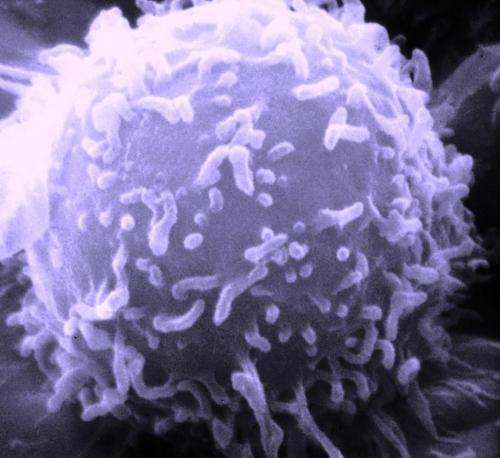Cancer cells adapt energy needs to spread illness to other organs

Want to understand why cancer cells metastasize? Think of Sparta. Ancient Greek warriors were fed a special diet that better prepared them for the demands of battle on distant fields. Cancer cells that metastasize may do the same thing according to a new study revealing previously unknown differences between cancer cells that continue to grow at the original tumor site, and those that travel to other organs.
Given that a cancer cell's unyielding ability to metastasize is the primary cause of cancer-related death, understanding how they successfully migrate can be lifesaving.
Scientists at The University of Texas MD Anderson Cancer Center have found that cancer cells traveling to other sites have different energy needs from their "stay-at-home" siblings which continue to proliferate at the original tumor site. The study results are in the Sept. 21 online edition of Nature Cell Biology.
The reason may lie with the protein, PGC-1α, a type of transcription co-activator crucial to regulation of cellular metabolism. PGC-1α appears to play a role in how cancer cells are able to acquire unique energy sources that allow them to travel and spread cancer in the body.
"New therapy strategies are beginning to focus on the unique vulnerabilities of cancer cell metabolism. Determining the metabolic requirements of invasive cancer cells could be of therapeutic value," said Valerie LeBleu, Ph.D., assistant professor of cancer biology at MD Anderson and lead author of the Nature Cell Biology paper. "We found that invading cancer cells rely on mitochondria during their transition to other cancer sites."
Cancer cells use PGC-1α to stimulate the growth of new mitochondria, the cell's "power plants" that generate ATP, an energy "currency" used by cells to grow. Metastasizing cells also rely on PGC-1α for a process known as oxidative phosphorylation that boosts ATP during the cell's journey to other sites. If mitochondria is the kitchen, then PGC-1α is the chef, ATP the entreé and oxidative phosphorylation a key ingredient. This overall process, mitochondria respiration, allows some cancer cells to harness the required energy to survive the hostile journey through tumor and normal issue, blood vessels, and entry into new organs.
In other words, some cancer cells are programmed to eat at home, while others have a special diet that allows them to travel to other sites. If there was a therapeutic way to stop the migrating cells from packing a lunch ahead of time, it could potentially halt their journey. Suppressing PGC-1α appears to accomplish this.
"The most dangerous cancer cells are the ones that can efficiently move and find a new home," said Raghu Kalluri, M.D., Ph.D., chair of cancer biology and an investigator on the study. "The study revealed a strong correlation between PGC-1α expression in invasive cancer cells and the formation of distant metastases in breast cancer patients."
More information: αPGC-1 mediates mitochondrial biogenesis and oxidative phosphorylation in cancer cells to promote metastasis, Nature Cell Biology, DOI: 10.1038/ncb3039















